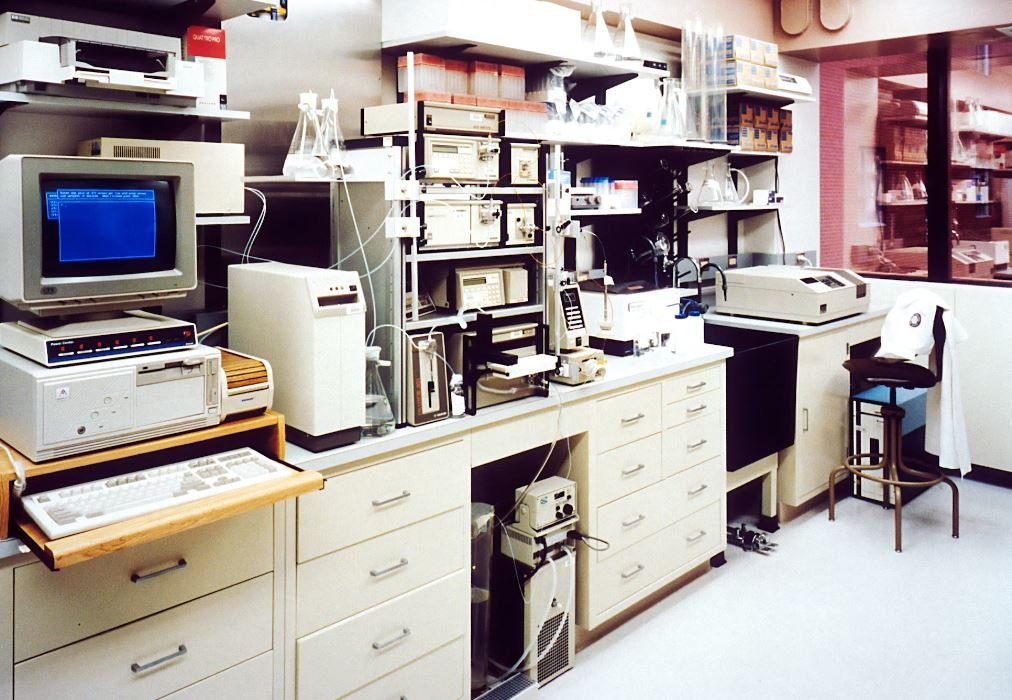Input Data for GIS
Geographic Information Systems (GIS) are powerful tools used to capture, analyze, and present spatial data. GIS technology relies on input data, which is the information used to create and update the maps and databases within the system. This article will explore the different types of input data used in GIS and how they contribute to creating accurate and reliable spatial representations.
Key Takeaways:
- Input data is crucial for GIS systems to create accurate spatial representations.
- Different types of input data, such as aerial imagery and survey data, bring different perspectives to GIS analysis.
- Data quality, metadata, and data currency are important considerations when selecting input data for GIS.
- GIS input data can be obtained from various sources, including government agencies, private companies, and crowdsourcing platforms.
In GIS, **aerial imagery** provides valuable visual information about the Earth’s surface. It is often collected using satellites or aircraft and can be used to identify and analyze features such as land cover, vegetation, and buildings. **LiDAR** (Light Detection and Ranging) data is another important input for GIS, capturing detailed 3D information about the Earth’s surface and enabling precise measurements. *Aerial imagery and LiDAR data together offer a comprehensive view of the landscape, facilitating accurate mapping and analysis.*
**Survey data** is crucial for both creating new GIS data and updating existing datasets. Surveys can involve field measurements, interviews, or data collection using instruments such as GPS devices. This input data helps ensure the accuracy, currency, and completeness of GIS datasets. *Survey data collection is an iterative process that requires careful planning and execution to obtain reliable spatial information.*
The Importance of Data Quality
Data quality is a crucial aspect of GIS input data. Inaccurate or outdated data can lead to incorrect analysis and flawed decision-making. Therefore, it is important to assess the quality of input data before using it in a GIS. **Metadata**, which provides information about the data’s source, accuracy, and currency, is essential for understanding data quality. *Taking the time to verify and understand the quality of input data enhances the reliability of GIS analysis.*
**Data currency** refers to the timeliness of input data. Some GIS applications require the most up-to-date data available, while others may be more tolerant of older data. The choice of input data must consider the currency requirements of the specific GIS project or application. *By using current data, GIS users can ensure that their analysis is based on recent and relevant information.*
Acquiring GIS Input Data
GIS input data can be obtained from various sources. Governments often provide open-access data portals where users can download or access a wide range of spatial datasets. Private companies, such as professional surveyors or satellite imagery providers, offer high-quality data for purchase. Crowdsourcing platforms, such as OpenStreetMap, allow users to contribute and edit GIS input data collaboratively. *The availability of diverse data sources makes it easier to acquire the necessary input data for GIS projects.*
Table 1 provides examples of different types of input data commonly used in GIS:
| Data Type | Description |
|---|---|
| Aerial Imagery | High-resolution images captured from aircraft or satellites, showing details of the Earth’s surface. |
| LiDAR Data | Precise 3D measurements of the Earth’s surface using laser technology. |
| Topographic Maps | Maps that represent the terrain, elevation, and natural features of an area. |
Table 2 outlines the considerations for selecting input data in GIS:
| Consideration | Description |
|---|---|
| Data Quality | Ensuring the accuracy, reliability, and completeness of input data. |
| Metadata | Information about the source, accuracy, currency, and other characteristics of the data. |
| Data Currency | The timeliness and relevance of the data to the GIS project or application. |
Data Integration and Analysis
GIS input data is the foundation for spatial analysis, allowing users to explore relationships and patterns in the data. Through data integration, different input data sources can be combined to create more comprehensive and accurate models. GIS analysis involves processes such as overlaying and proximity analysis, enabling users to make informed decisions based on spatial relationships and attributes. *GIS analysis can uncover hidden insights and support better planning and decision-making.*
Table 3 showcases the potential applications of GIS analysis:
| Application | Description |
|---|---|
| Environmental Impact Assessment | Evaluating the potential effects of a project on the environment. |
| Transportation Planning | Optimizing routes, analyzing traffic patterns, and planning transportation infrastructure. |
| Emergency Response | Assessing risks, identifying evacuation routes, and coordinating response efforts during emergencies. |
GIS relies on accurate and up-to-date input data to facilitate effective spatial analysis and decision-making. By understanding the various types of input data, considering data quality and currency, and utilizing the power of GIS analysis, users can unlock the full potential of geographic information systems.

Common Misconceptions
Misconception 1: GIS input data is only about mapping
One common misconception people have about GIS input data is that it is solely used for creating maps. While maps are a significant application of GIS, the input data used goes beyond just spatial information. GIS input data includes a wide range of other data types, such as attribute data, satellite imagery, sensor data, and more. It helps to analyze and understand various phenomena beyond mapping.
- GIS input data encompasses more than just spatial information
- Attribute data, satellite imagery, and sensor data are also included
- GIS input data enables analysis of various phenomena beyond mapping
Misconception 2: GIS input data is always accurate
Another common misconception is that GIS input data is always accurate. While GIS technology has significantly improved over the years, it is crucial to remember that input data can be prone to errors and inaccuracies. These errors can originate from various sources, such as outdated data sources, human errors during data collection or entry, and limitations in measurement techniques. It is important to validate and verify GIS input data before making critical decisions based on it.
- GIS input data can contain errors and inaccuracies
- Errors can come from outdated data sources or human errors
- Verification of GIS input data is essential before making critical decisions
Misconception 3: GIS input data is always freely available
Some people assume that GIS input data is readily available for free. While there are sources that offer open data or free access to specific datasets, comprehensive and quality GIS input data often comes at a cost. Organizations usually invest in data collection, data purchase, or data acquisition processes to obtain accurate and up-to-date datasets. Additionally, some datasets may have restrictions on their use, requiring permissions or licenses for access and use.
- Comprehensive and quality GIS input data often comes at a cost
- Data collection and acquisition processes require investment
- Some datasets may have restrictions on their use
Misconception 4: GIS input data is only useful for professionals
Many people believe that GIS input data is only relevant and useful for professionals in the geospatial industry. However, the applications of GIS input data extend beyond this field. GIS data can be beneficial for decision-making in various industries such as urban planning, environmental management, transportation, health, and marketing. Everyday users can also benefit from GIS-based applications, such as navigation systems or mapping apps on their smartphones.
- GIS input data has applications beyond the geospatial industry
- Useful for decision-making in urban planning, environmental management, etc.
- GIS-based applications benefit everyday users
Misconception 5: GIS input data is static and unchangeable
Lastly, some people perceive GIS input data as static and unchangeable. However, GIS is a dynamic system, and the data it utilizes can be constantly updated and revised. New data sources become available, and existing datasets can be improved, providing more accurate and up-to-date information. Moreover, through data integration and spatial analysis, GIS input data can be transformed and combined to generate new insights and derive meaningful conclusions.
- GIS input data can be constantly updated and revised
- New data sources improve the accuracy and currency of GIS data
- Data integration and spatial analysis generate new insights

Input Data for GIS
Geographic Information Systems (GIS) are powerful tools that allow us to analyze and visualize spatial data. To make the most accurate assessments, it’s essential to have reliable input data. In this article, we will explore various types of input data used in GIS and their significance. The following tables present fascinating examples of such data.
Elevation Data
Elevation information plays a crucial role in mapping and planning activities. It helps us understand the topography of an area and its potential impact on various projects or natural phenomena. The table below showcases the elevation data of five significant mountains around the world.
| Mountain | Elevation (in meters) |
|---|---|
| Mount Everest | 8,848 |
| K2 | 8,611 |
| Kangchenjunga | 8,586 |
| Lhotse | 8,516 |
| Makalu | 8,485 |
Population Density
Understanding population density is vital for urban planning, resource allocation, and disaster management. The following table presents the population densities of five cities worldwide, showcasing the variation across different regions.
| City | Country | Population | Area (in square kilometers) | Density (people per square kilometer) |
|---|---|---|---|---|
| Mumbai | India | 20,411,274 | 603.4 | 33,786 |
| Istanbul | Turkey | 15,029,231 | 5,343 | 2,812 |
| Tokyo | Japan | 13,515,271 | 2,190 | 6,173 |
| London | United Kingdom | 9,176,530 | 1,572 | 5,837 |
| New York City | United States | 8,336,817 | 783.8 | 10,645 |
Land Use Types
Understanding land use patterns is crucial for urban planning, environmental studies, and conservation efforts. The table below exhibits the distribution of land use types in a hypothetical region, showcasing the balance between residential, agricultural, commercial, and natural areas.
| Land Use Type | Percentage of Total Area |
|---|---|
| Residential | 45% |
| Agricultural | 30% |
| Commercial | 15% |
| Natural | 10% |
Transportation Network
An efficient transportation network is key for connectivity, planning, and optimizing travel routes. The table below showcases the road lengths and railway tracks in five countries, representing their transportation infrastructure’s varying complexities.
| Country | Road Length (in kilometers) | Railway Length (in kilometers) |
|---|---|---|
| United States | 6,586,610 | 250,000 |
| Russia | 1,283,387 | 87,157 |
| China | 4,846,892 | 146,300 |
| Brazil | 1,751,868 | 28,538 |
| Australia | 1,022,314 | 33,819 |
Climate Data
Climate data helps us understand weather patterns, study climate change, and make informed decisions regarding agriculture, construction, and disaster preparedness. The following table displays the average annual temperatures and precipitation of five major cities across the globe.
| City | Average Annual Temperature (in Celsius) | Average Annual Precipitation (in mm) |
|---|---|---|
| Nairobi | 19.4 | 844 |
| Sydney | 17.3 | 1,213 |
| Moscow | 5.8 | 707 |
| São Paulo | 19.5 | 1,442 |
| Reykjavik | 4.5 | 1,724 |
Protected Areas
Protected areas safeguard valuable ecosystems, biodiversity, and cultural heritage sites. The table below exhibits the extent of protected areas in five countries, emphasizing their dedication to environmental conservation.
| Country | Terrestrial Protected Area (in square kilometers) | Marine Protected Area (in square kilometers) |
|---|---|---|
| Australia | 1,395,380 | 3,305,686 |
| United States | 2,248,420 | 4,368,518 |
| Brazil | 1,149,530 | 1,444,300 |
| South Africa | 427,240 | 156,848 |
| China | 467,700 | 1,432,160 |
Satellite Imagery Resolution
Satellite imagery provides a wealth of information for different applications, such as land cover classification, disaster monitoring, and urban growth analysis. The table below showcases the resolution capabilities of five prominent satellite sensors, representing the level of detail captured.
| Satellite Sensor | Resolution (in meters) |
|---|---|
| WorldView-3 | 0.31 |
| GeoEye-1 | 0.41 |
| IKONOS | 0.82 |
| Landsat 8 | 15 |
| MODIS | 250 |
Air Quality Index
Air quality significantly impacts public health and environmental quality. To assess air pollution levels, the Air Quality Index (AQI) provides valuable information. The table below presents the AQI levels and corresponding health implications.
| Air Quality Index | Air Quality | Health Implications |
|---|---|---|
| 0-50 | Good | Air quality is satisfactory, and air pollution poses little or no risk. |
| 51-100 | Moderate | Air quality is acceptable, but some pollutants may slightly affect individuals who are unusually sensitive to air pollution. |
| 101-150 | Unhealthy for Sensitive Groups | Members of sensitive groups may experience health effects. The general public is less likely to be affected. |
| 151-200 | Unhealthy | Everyone may begin to experience health effects, and members of sensitive groups may experience more serious effects. |
| 201-300 | Very Unhealthy | Health warnings of emergency conditions. The entire population is more likely to be affected. |
Soil Composition
The composition of soil has significant implications for agriculture, land management, and ecological studies. The table below illustrates the soil composition percentages of four essential components: sand, silt, clay, and organic matter.
| Soil Component | Percentage of Total Composition |
|---|---|
| Sand | 40% |
| Silt | 25% |
| Clay | 30% |
| Organic Matter | 5% |
Conclusion
In conclusion, GIS relies heavily on a wide range of input data to effectively analyze and visualize geographic information. The tables presented in this article offer intriguing examples of input data, showcasing the diversity and importance of factors such as elevation, population density, land use, transportation, climate, protected areas, satellite imagery, air quality, and soil composition. By utilizing such reliable and verifiable input data, GIS professionals can make informed decisions, unravel insights, and contribute to better planning and decision-making processes.
Frequently Asked Questions
1. What is GIS?
What is GIS?
2. What are the benefits of using GIS?
What are the benefits of using GIS?
3. What kind of data can be used as input for GIS?
What kind of data can be used as input for GIS?
4. What are the common file formats used for GIS data?
What are the common file formats used for GIS data?
5. How can I obtain GIS data?
How can I obtain GIS data?
6. Can I use my own collected data as input for GIS?
Can I use my own collected data as input for GIS?
7. Are there any quality requirements for GIS input data?
Are there any quality requirements for GIS input data?
8. How can I visualize my GIS input data?
How can I visualize my GIS input data?
9. Can GIS input data be edited or modified?
Can GIS input data be edited or modified?
10. How can GIS input data be utilized for analysis?
How can GIS input data be utilized for analysis?




